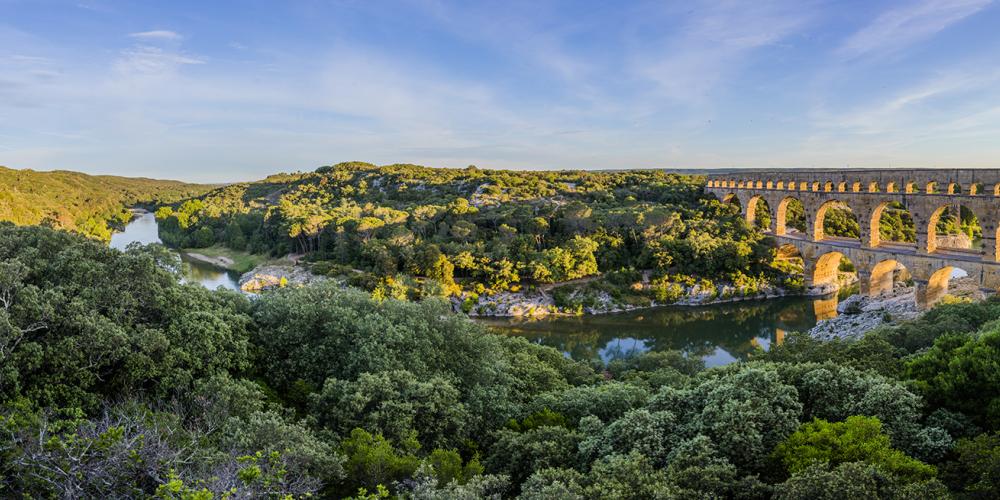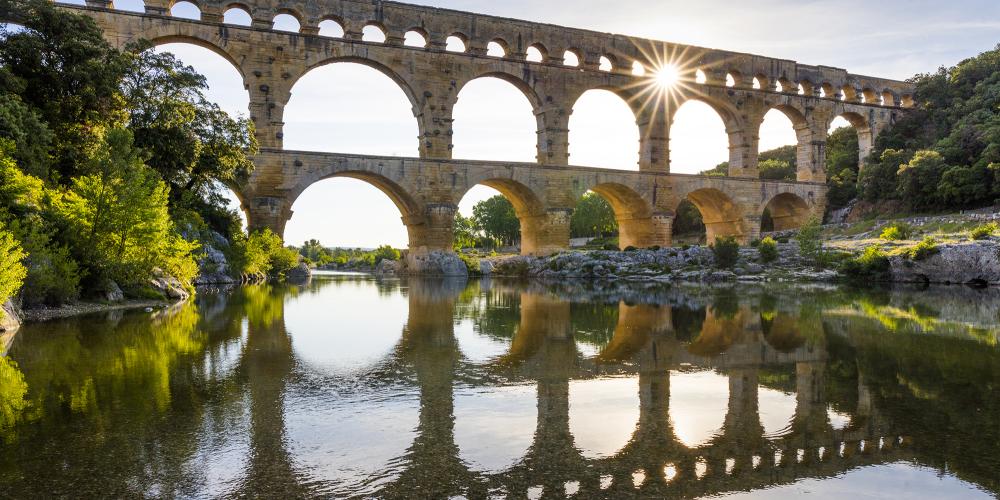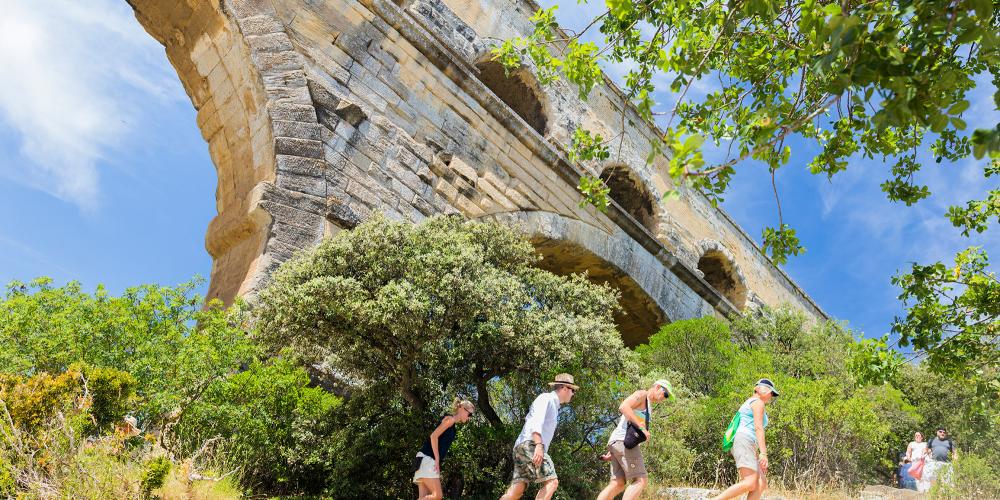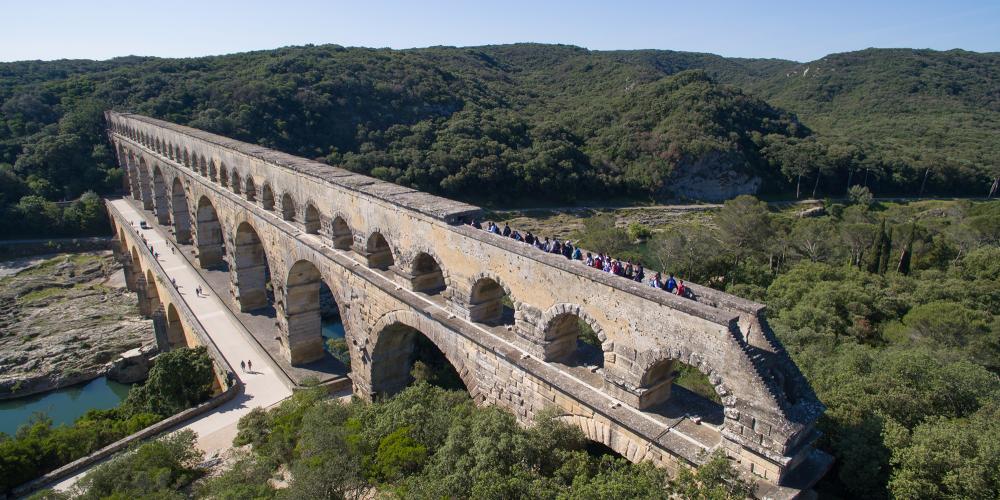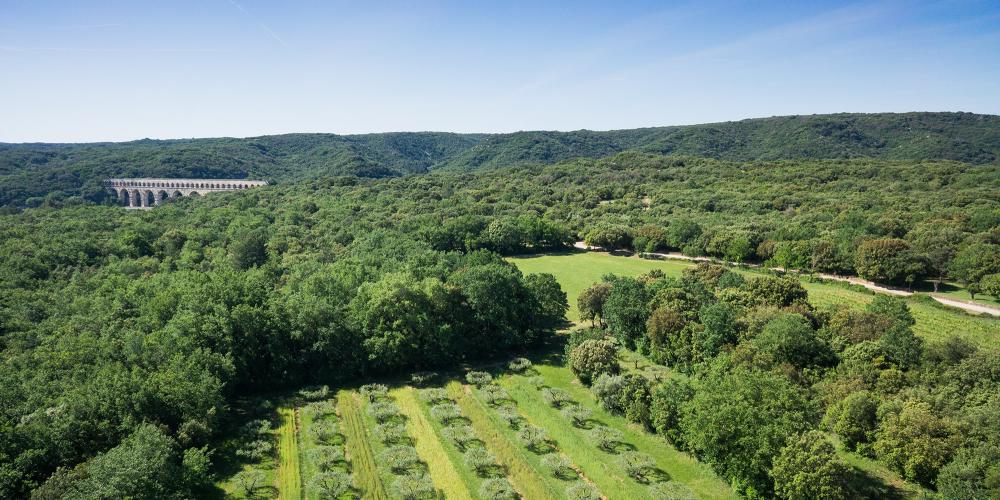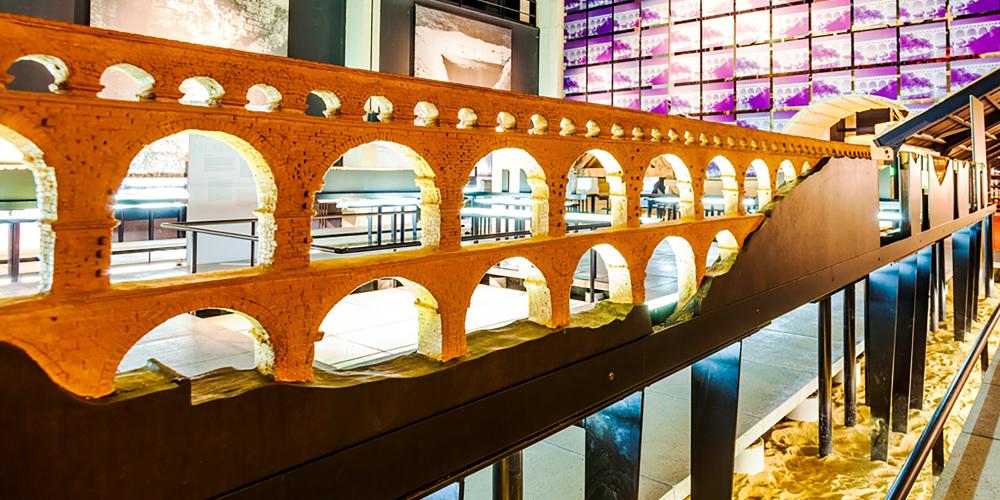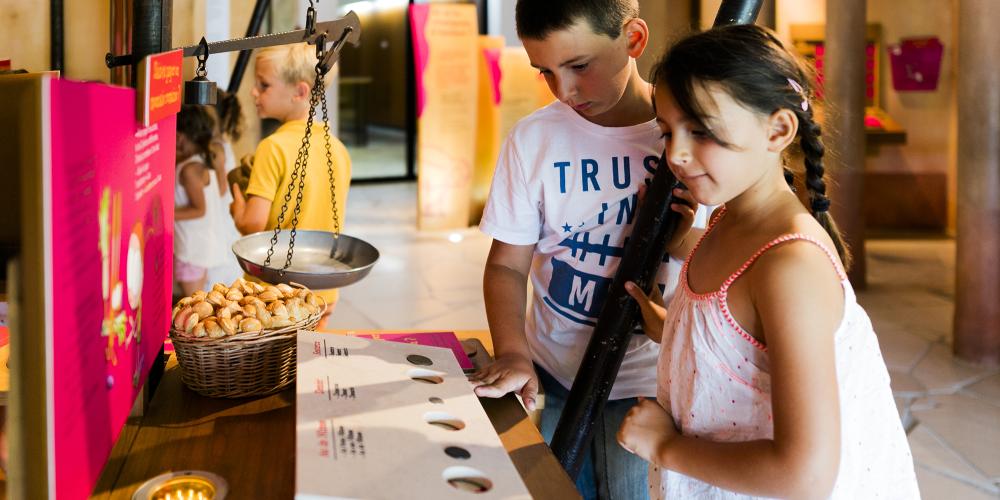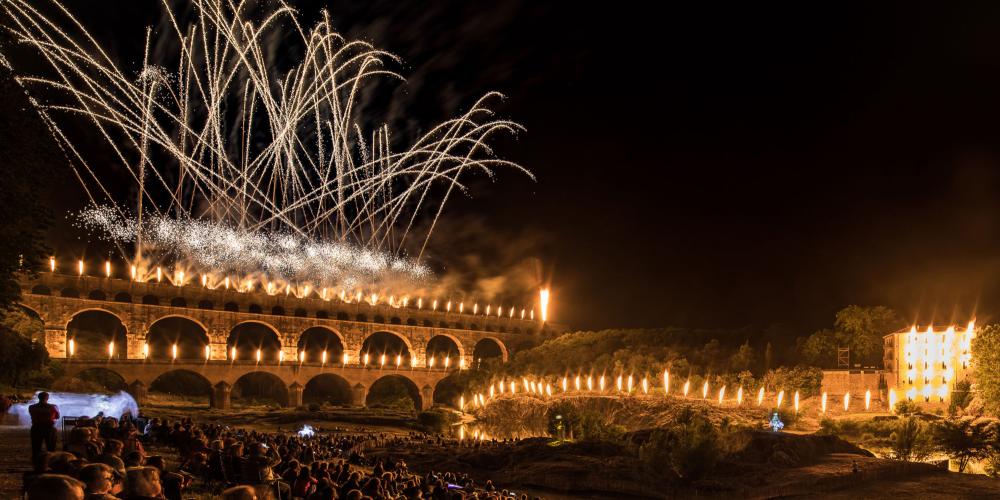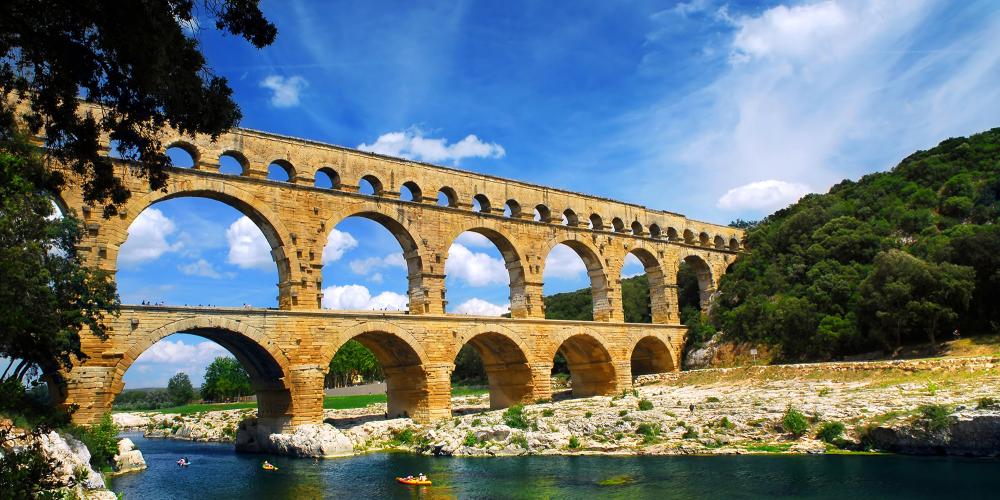Pont du Gard, France

The aqueducts built across Europe are among the most important symbols of the Roman Empire. The masterpieces demonstrate engineering prowess and an ability to move and contain the earth's most precious liquid, water. Of these, the Pont du Gard is considered among the best-preserved and a wonder of ancient construction—providing a glimpse of the Empire's ability to spread new technologies to its colonies and thus across the world.
It may sound like a simple advancement today, but in ancient times controlling the flow and supply of water was critical to the success of the Roman Empire. The system of aqueducts built across the continent was more sophisticated than anything seen before. Being able to transport and store water allowed for the colonisation of new areas and for the endearment of the Romans to the locals by providing easy access to an important resource. The techniques developed by the Romans have been used ever since, with many parts of the world still utilising the innovations that were designed 2,000 years ago.
The wonder of the Pont du Gard can be appreciated from different angles, with trails leading up each side of the river and viewpoints from below. The three-tiered structure has a pathway on the top that you can access with a guided tour. A modern museum gives you insight into the history and the operation of the aqueduct, while a short film blends documentary and fiction. In the warmer months, a beach on the riverbank is a glorious place for a swim, with the ancient marvel as a backdrop.
Le Pont du Gard: A Living Masterpiece
The Pont du Gard is the centrepiece of an aqueduct designed to supply running water to the city of Nemausus (Nimes). Its extraordinary dimensions—50 metres high, 490 metres wide (originally)—and its excellent state of preservation make it one of the most valuable relics of Antiquity. Recognised as a masterpiece of human creative genius, it has been a World Heritage site since 1985.
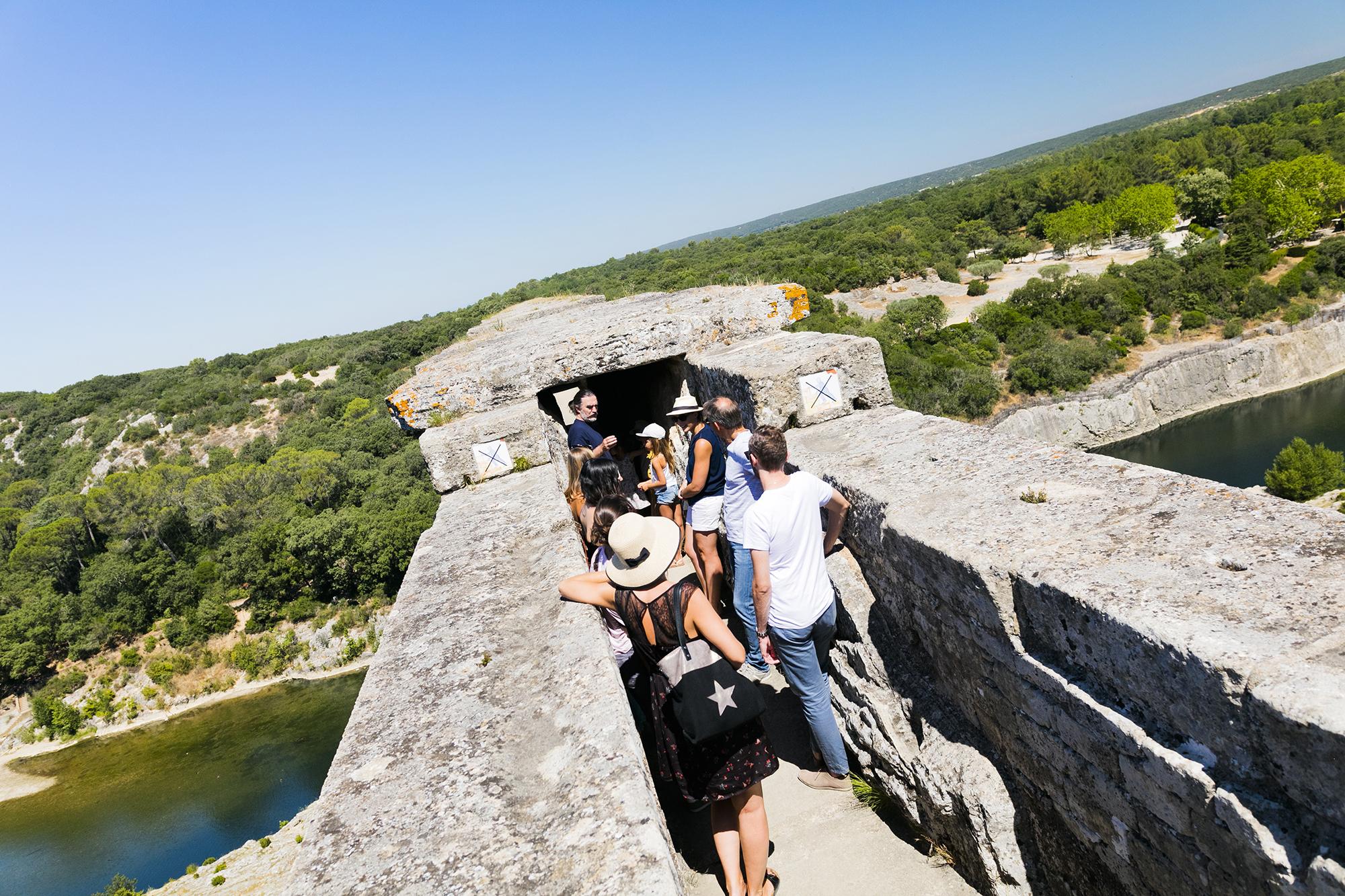
With more than a million visitors per year, Pont du Gard is the most visited ancient monument in France. To preserve this architectural wonder, the nearly 165-hectare site underwent major development in 2000. The project reconnected this amazing structure with its natural environment, ensured its long-term protection, and created a visitor centre to showcase the monument. The Pont du Gard has been recognised as a "Grand Site de France."
There are a vast range of cultural activities offered around the monument, encouraging you to learn about Roman civilisation, construction techniques, agriculture and Mediterranean landscapes. These sessions can be booked with a tour guide, alone or in a group.
Learning in Real Time
At the Pont du Gard Museum, you will marvel at the wonder of Roman civilisation and ingenuity. And for the kids (and kids at heart), a visit to the education-based Ludo is a chance to go back in time and pretend to be a Gallo-Roman scholar, an engineer trying to control the water, or a budding archaeologist.
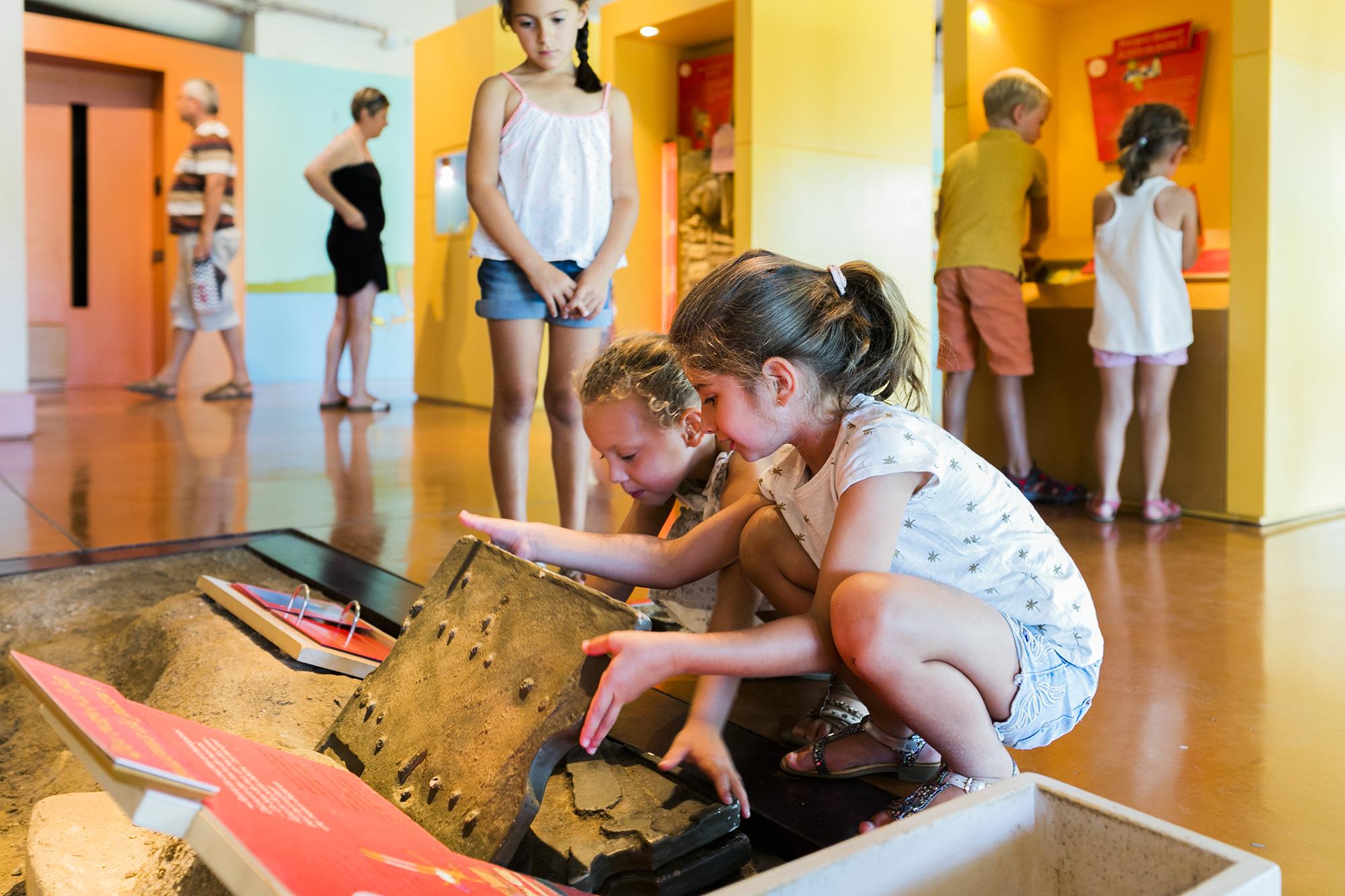
After touring the exhibits, don't miss the documentary film "A Bridge through Time," which is broadcast on a giant CinemaScope screen with Dolby sound. The movie explores this incredible structure with stunning aerial images.
Beyond Walls
In the heart of the garrigue, where the aqueduct is located, 15 hectares of old agrarian plots have been restored. "Memories of Garrigue" is a 1.4-kilometre marked trail enclosed by dry stone walls and filled with acres of vineyards, olive groves, wheat fields, and oak trees. It tells the story of a Mediterranean landscape shaped by man for more than 2,000 years.
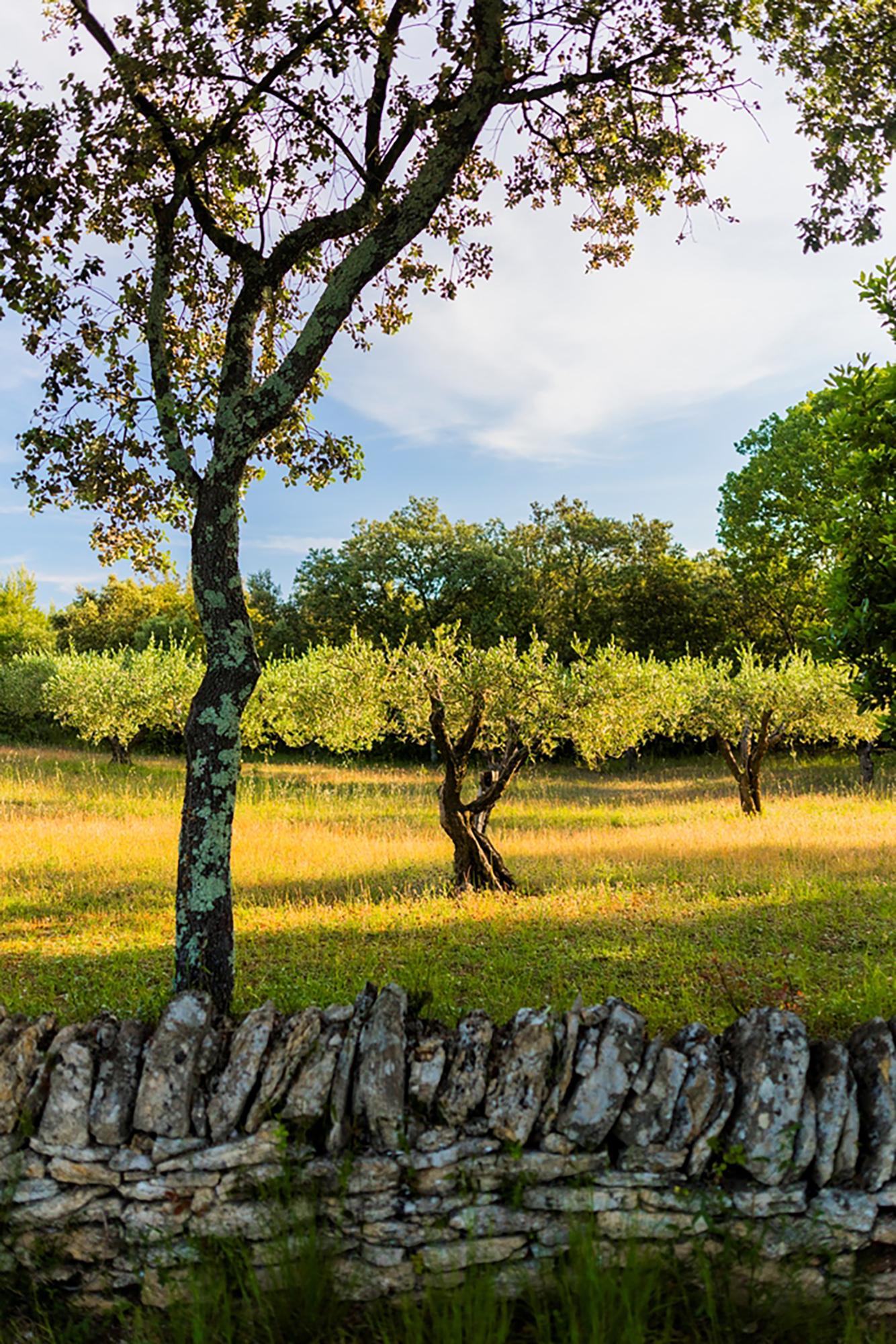
With its history and nature, outdoor and indoor activities, swimming and exhibitions, Pont du Gard is a unique destination to visit. Throughout the year, a full programme of original cultural events brings this place to life and showcases its artistic offerings. Major events at the Pont du Gard site include "Garrigue en Fête" over the Easter weekend, the light show "Les Fééries du Pont" in June, and the annual temporary exhibitions. Throughout the summer, people come to enjoy its "River Rendez-Vous" and the magnificent illumination of the monument at nightfall.
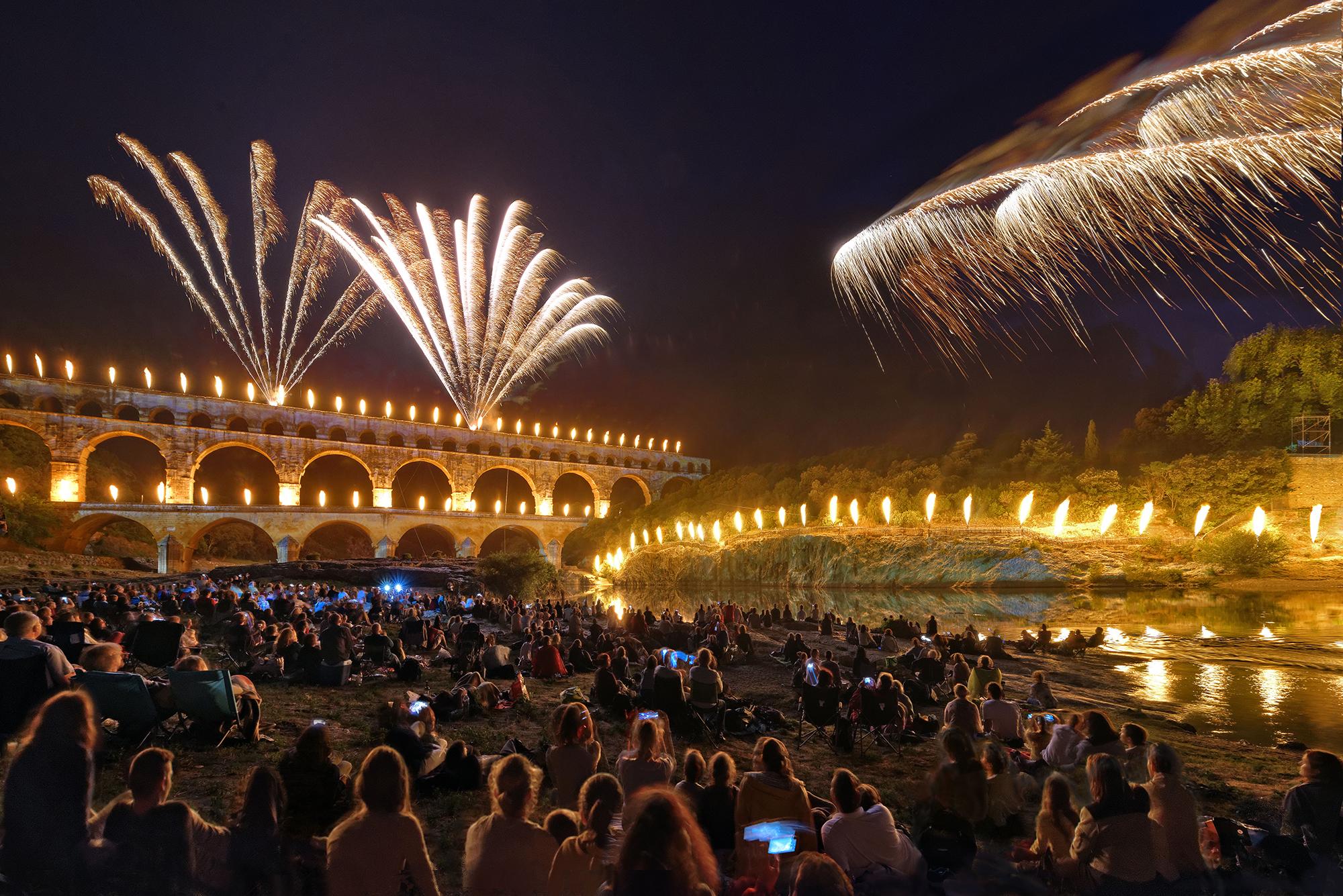
How to Get There
Pont du Gard is located in the heart of the Avignon, Marseille, and Montpellier triangle. It takes 2 hours and 40 minutes from Paris (or one hour from Lyon or Marseilles) by high speed train (TGV Mediterranean) to reach the site.
If arriving by car from the A9 motorway, take exit 23 at Remoulins towards Uzès, then follow the signs to the right or left banks. Nîmes is 27 kilometres away, Avignon is 21 kilometres away.
Travelling by rail, the Nîmes and Avignon train stations are served by the TGV. The Paris–Nîmes TGV train takes 2 hours 50 minutes.
By bus, you should take Line A15, when departing from Avignon or Alès. Take Line B21 from Nîmes.
If you are arriving by plane, Pont du Gard is 30 minutes from Avignon and Nîmes, 45 mInutes from Montpellier, and 1.25 hours from Marseille.
When to Visit
The Pont du Gard site is open to the public all year round. In spring, the Mediterranean landscapes reveal all their beauty. In summer, it is possible to swim in the river and enjoy an array of evening entertainment. In autumn, vineyards and vegetation take on their most beautiful colours. And in the winter, you can enjoy all the magic of the place in peace.
How to Visit
Pont du Gard offers three different types of vistior passes. The Pass Aqueduc (with guide) enables you to discover the channel, on the third level of the bridge, at 48 meters high (30 minutes). For a private visit of the Pont du Gard and its museum, take advantage of the Pass Patrimoine and discover the secrets of the aqueduct's construction (1 hour and 30 minutes). With the Pass Découverte, you can visit this unique place by yourself and enjoy the cultural areas (museum, cinema, children area ludo, and natural paths “Mémoires de Garrigue”).
Make sure to investigate the entire year-long festival and artistic schedule, including the lighting of the bridge, expositions, and the discovery areas: the museum, cinema, ludo, and surrounding landscape.
Sights and Attractions recommended by the locals
Pont du Gard, France
The Pont du Gard site is open all year round
- From 9:00 to 18:00 in January, February, March, November and December
- From 9:00 to 20:00 in April and October
- From 9:00 to 22:00 in September and June
- From 9:00 to 21:00 in May
- From 9:00 to 23:00 in July and August
Cultural activities and shopping:
Open from 9:00.
Closing times :
- January: 17:30
- February and December: 17:00
- March : 18:30
- April, May, June and September: 19:00
- July and August: 20:00
- October and November: 18:00
Entrance fee ticket:
Discovery Pass (Pont du Gard, Museum, Ciné, Ludo, the Mémoires de Garrigue path, Exhibition)
- Adult rate: 8.50 € / pers
- Reduced price: 6 € / pers
- Child rate (from 6 to 17 years): 6 € / pers
- Free under -6 years
Pass Aqueduct: Discovery Pass + guided tour of the top level of the Aqueduct
- Adult rate: 11.50 € / pers
- Reduced price: 9 € / pers
- Child rate (6 to 17 years): 6 € / pers
- Free under -6 years
Prestige Pass: Aqueduct Pass + guided tour of the Pont du Gard + Museum
- Adult rate: 15.50 € / pers
- Reduced price: 13 € / pers
- Child rate (6 to 17 years): 6 € / pers
- Free under -6 years
Evening rates for lighting (only from 07/07 to 02/09/2018):
- Adult rate: 5 €
- Reduced price: 2 €
- Free under -17 years
Parking included and strictly reserved for the customers of the site.
